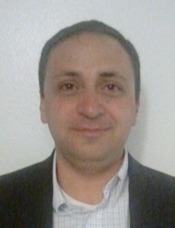Program Information
Improvement of Dosimetric Quality and Delivery Efficiency with TomoEdge Dynamic Jaws
J Abraham*, S Qi , J DeMarco , D Low , UCLA Department of Radiation Oncology, Los Angeles, CA
Presentations
SU-E-T-203 Sunday 3:00PM - 6:00PM Room: Exhibit HallPurpose:The TomoEdge Dynamic jaws is the newest evolution to the TomoTherapy system. It opens the jaws dynamically as they sweep across the target. We report our initial experience with the TomoEdge by quantifying the dosimetric and plan efficiency as compared to the static jaw.
Methods:A total of 15 cases, including five Head and neck, five localized prostrate and five prostrate with nodal involvement were selected in this study. For each case, four TomoHelical plans were generated using Tomotherapy planning system. The pitch and modulation factor were held constant for all plans, while jaw settings were changed, 2.5 cm static vs. dynamic and 5 cm static vs. dynamic jaws were used for each plan. Plan quality was evaluated using the conformity index for 95% isodose, homogeneity index, dose-volume histogram (DVHs), integral dose to the non-treatment volume (NTV), and dose profiles (defined at the center of the treatment volume in the longitudinal direction). To characterize the plan delivery efficiency, the treatment time and monitor units (MUs) of the four treatment plans were collected and analyzed.
Results:Both dynamic and static jaw techniques yielded clinical acceptable plans with comparable dosimetric indices. The Homogeneity index and CI₉₅ do not show a significant difference with regards to static versus swept jaws plans. Additionally, the CI₅₀ index indicates that 5 cm dynamic setting is comparable to a 2.5 cm jaw. Most dramatically, the dose penumbra in the longitudinal direction is greatly reduced. This reduction of dose build up is apparent in the reduced mean dose to the non-treatment volume (NTV) with the dynamic jaw technique.
Conclusion:TomoEdge dynamic jaw plans greatly improve the longitudinal conformity. Similar treatment time was achieved for dynamic and static jaw plans using the same jaw sizes, however, ~ 50% of reduction of the delivery time is possible for 5 cm dynamic jaw plans.
Funding Support, Disclosures, and Conflict of Interest: D. Low is a member of the advisory board for Accuary, the manufacturer of the Tomotherapy system.
Contact Email:


